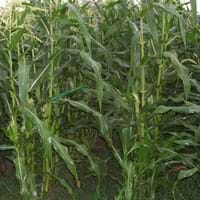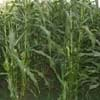Life Span
Annual
Perennial
Type
Vegetable
Flowering Plants, Fruits, Trees
Origin
Hybrid origin, North America, Central America, South America
Central America, Europe, North America
Types
Not Available
Not Available
Habitat
Clay soil areas, Loamy soils, Sandy areas
Hedge, Scrubs, Woods
USDA Hardiness Zone
Not Available
4-8
AHS Heat Zone
12-4
Not Available
Sunset Zone
A1, A2, A3, H1, H2, 1a, 1b, 2a, 2b, 3a, 3b, 4, 5, 6, 7, 8, 9, 10, 11, 12, 13, 14, 15, 16, 17, 18, 19, 20, 21, 22, 23, 24
Not Available
Habit
Upright/Erect
Not Available
Flower Color
Not Available
White
Flower Color Modifier
Bicolor
Not Available
Fruit Color
White, Yellow, Light Yellow, Peach
Yellow
Leaf Color in Spring
Green, Dark Green
Dark Green
Leaf Color in Summer
Green, Dark Green
Green
Leaf Color in Fall
Green, Dark Green
Brown, Green, Light Yellow
Leaf Color in Winter
Green, Dark Green
Not Available
Leaf Shape
Long Linear
Oblong
Plant Season
Spring, Summer, Fall, Winter
Summer
Sunlight
Full Sun
Full Sun, Partial shade
Growth Rate
Very Fast
Medium
Type of Soil
Clay, Loam, Sand
Loamy
The pH of Soil
Neutral
Neutral
Soil Drainage
Well drained
Well drained
Bloom Time
Indeterminate
Fall, Summer
Tolerances
Drought
Drought
Where to Plant?
Ground, Pot
Ground
How to Plant?
Seedlings, Transplanting
Grafting, Seedlings, Transplanting
Plant Maintenance
Medium
Medium
Watering Requirements
Average Water Needs, Do Not over Water, Needs watering once a week, Never Over-water, Over-head watering
Medium
In Summer
Lots of watering
Lots of watering
In Spring
Moderate
Moderate
In Winter
Average Water
Average Water
Soil Type
Clay, Loam, Sand
Loamy
Soil Drainage Capacity
Well drained
Well drained
Sun Exposure
Full Sun
Full Sun, Partial shade
Pruning
Remove damaged leaves, Remove dead branches, Remove dead leaves
Prune when plant is dormant, Remove dead or diseased plant parts
Fertilizers
Nitrogen, Phosphorous, Potassium, Well-rotted manure
All-Purpose Liquid Fertilizer
Pests and Diseases
Aphids, Armyworm, Beetles, Flea Beetles, Leaf spot, Red blotch, Seedcorn maggot, Worms
Aphids, Curculio occidentis, Japanese Beetles, Leaf Rollers, Leafminer, Mites, Red blotch, sawflies, Scale, Stink bugs
Plant Tolerance
Drought
Drought
Flowers
Insignificant
Yes
Flower Petal Number
Not Available
Single
Foliage Texture
Coarse
Medium
Foliage Sheen
Glossy
Matte
Attracts
Aphids, Beetles, Not Available
Not Available
Allergy
Asthma, Diarrhea, Headache, Nausea, Runny nose, Skin rash, sneezing, Vomiting
Digestive Problems, Respiratory problems
Aesthetic Uses
Not Used For Aesthetic Purpose
Showy Purposes
Beauty Benefits
Not Available
Beautiful Skin
Environmental Uses
Food for animals, Food for birds, Food for insects
Food for birds
Medicinal Uses
Iron, Potassium, Vitamin C
Anthelmintic, Antibacterial, Astringent, Hypnotic, Laxative, Refrigerant
Part of Plant Used
Kernel
Fruits
Other Uses
Used as a nutritious food item, Used for its medicinal properties
Edible syrup, Jam, Jelly, Used As Food
Used As Indoor Plant
No
No
Used As Outdoor Plant
Yes
Yes
Garden Design
Edible, Herb, Vegetable
Not Available
Botanical Name
ZEA mays var rugosa
Malus sylvestris
Common Name
Sweet Corn
European crab apple
In Hindi
स्वीट कॉर्न
european crab apple
In German
Mais
Der Holzapfel, Europäischer Wildapfel
In French
Le maïs sucré
Le Boquettier, le Pommier sauvage ou Pommier des bois
In Spanish
Maíz dulce
Malus sylvestris, el Manzano silvestre, manzano silvestre europeo
In Greek
γλυκό καλαμπόκι
Ευρωπαϊκή μήλο καβουριών
In Portuguese
milho doce
Malus sylvestris
In Polish
Kukurydza
Jabłoń dzika
In Latin
Dulcis frumentum
european crab apple
Phylum
Magnoliophyta
Magnoliophyta
Class
Liliopsida
Magnoliopsida
Clade
Angiosperms, Commelinids, Monocots
Angiosperms, Eudicots, Rosids
Tribe
Andropogoneae
Not Available
Subfamily
Not Available
Not Available
Number of Species
Not Available
Not Available
Importance of Sweet Corn and European Crab Apple
Want to have the most appropriate plant for your garden? You might want to know the importance of Sweet Corn and European Crab Apple. Basically, these two plants vary in many aspects. Compare Sweet Corn and European Crab Apple as they differ in many characteristics such as their life, care, benefits, facts, etc. Every gardener must at least have the slightest clue about the plants he wants to plant in his garden. Compare their benefits, which differ in many ways like facts and uses. The medicinal use of Sweet Corn is Iron, Potassium and Vitamin C whereas of European Crab Apple is Anthelmintic, Antibacterial, Astringent, Hypnotic, Laxative and Refrigerant. Sweet Corn has beauty benefits as follows: Not Available while European Crab Apple has beauty benefits as follows: Not Available.
Compare Facts of Sweet Corn vs European Crab Apple
How to choose the best garden plant for your garden depending upon its facts? Here garden plant comparison will help you to solve this query. Compare the facts of Sweet Corn vs European Crab Apple and know which one to choose. As garden plants have benefits and other uses, allergy is also a major drawback of plants for some people. Allergic reactions of Sweet Corn are Asthma, Diarrhea, Headache, Nausea, Runny nose, Skin rash, sneezing and Vomiting whereas of European Crab Apple have Digestive Problems and Respiratory problems respectively. Having a fruit bearing plant in your garden can be a plus point of your garden. Sweet Corn has showy fruits and European Crab Apple has showy fruits. Also Sweet Corn is not flowering and European Crab Apple is flowering. You can compare Sweet Corn and European Crab Apple facts and facts of other plants too.



